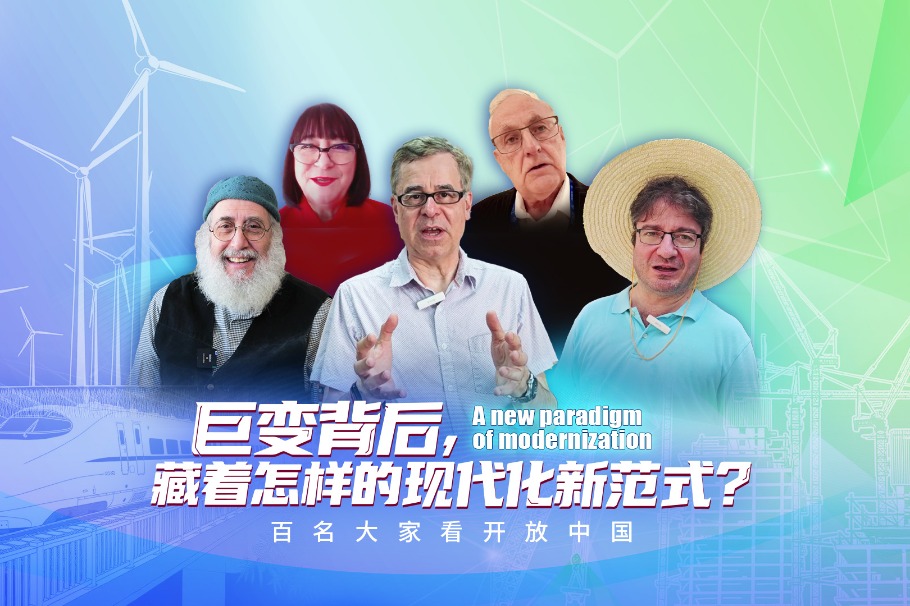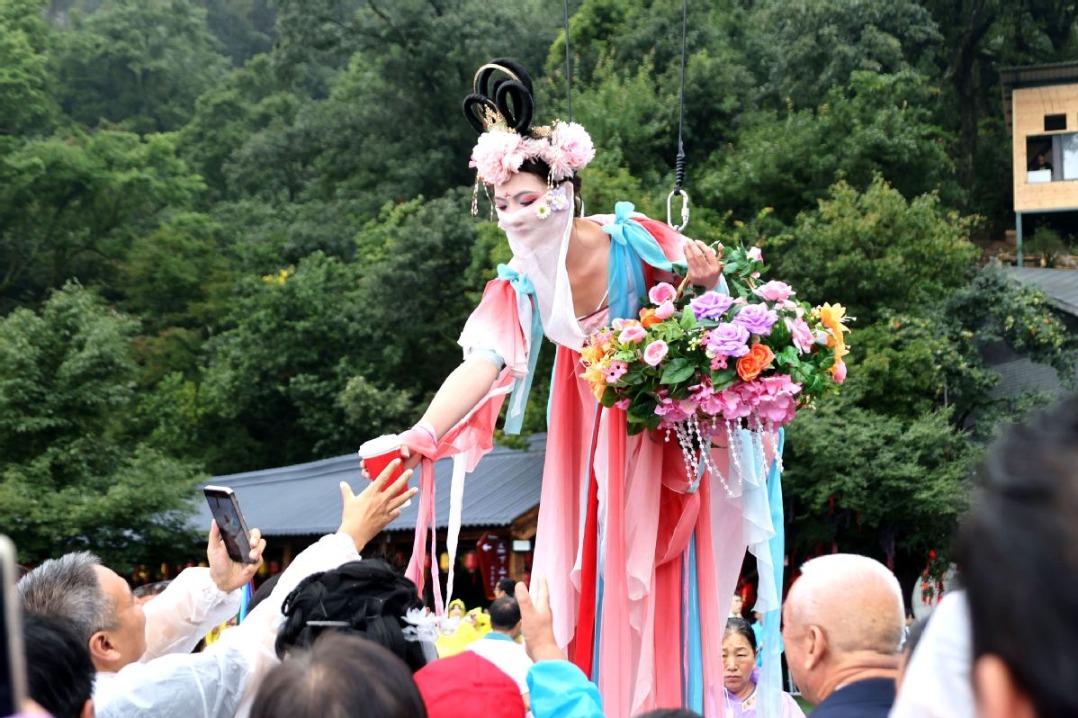Culture tourism fuels global exchange


The integration of culture and tourism in China in recent years offers novel cultural experiences, and has created new consumption models, stimulating overall consumer demand, and driving socioeconomic development. And the integration of culture and technology has fostered a positive cycle of innovation and high-quality development.
Thanks to these developments, traditional public cultural spaces are being reimagined and revitalized through the innovative combination of culture, commerce, tourism and sports, re-activating existing resources and streamlining the entire industry chain.
Museums, too, are evolving, shedding their once rarefied image and becoming more user-friendly with their engaging appeal. With fresh presentations and vibrant atmospheres, exhibitions in museums have become part of everyday life, with "museum fever" emerging as a new cultural trend. In fact, visiting a museum has now become a popular social activity, and traveling to a city specifically to explore its museums a popular choice for young tourists.
As culture and tourism continue to intertwine, China's museum sector is poised to undergo a new wave of development. By launching their own themed initiatives, major museums are positioning themselves to play a more significant role in the integration of culture and tourism, and promoting global cultural exchanges.
While cultural and creative products are serving as a bridge between museums and the public, collectible items like refrigerator magnets have extended the influence of cultural relics, by allowing people to "bring some copies of the exhibits home". For example, while people may not visit the National Museum of China in Beijing every day to see the "Phoenix Coronet", they can still appreciate its beauty by purchasing a refrigerator magnet.
Compared with traditional exhibitions, digital tools have far greater communicative power and represent a vital aspect of China's contemporary global cultural outreach. In an era of rapid technological advancement, digital culture and the digital economy are creating new possibilities of promoting artifacts. And digital technologies can now be leveraged to transform cultural relics into dynamic, personalized intellectual properties, facilitating their global dissemination through media channels.
Following the inclusion of Chinese New Year on the UNESCO intangible cultural heritage list, "new Chinese-style" cultural tourism is becoming increasingly popular. Also, experiential activities related to intangible cultural heritages, such as folk customs and handicraft-making techniques, have significantly gained in appeal, further driving cultural development.
The inclusion of Chinese New Year on the UNESCO intangible cultural heritage list has prompted a large number of overseas tourists to visit China to experience firsthand how China's biggest festival is celebrated. The visa-free entry policy has made it more convenient for overseas visitors to experience China's intangible cultural heritage, and local cultural and tourism departments are holding different activities, including themed events such as exhibitions and cultural shows centered on the country's intangible cultural heritage, emphasizing the importance of personalized and experiential travel.
Distinct regional settings and unique cultural atmospheres are improving tourism formats, with the growing influx of overseas visitors prompting the authorities to provide them with culturally immersive experiences and upgrading other tourism offerings.
As tourism, in all its forms, becomes more sophisticated, traditional cultural and tourism development frameworks, too, require improvement. Also, to have the Beijing Central Axis recognized as a UNESCO World Heritage site, it is crucial to articulate its development, central themes and historical significance. And to transform them into cultural and tourism products and services, there is a need to more creatively tell China's story and showcase the country's rich traditional culture. This approach will also help boost the integration of culture and tourism.
With the overall advancement of China's trade in services, infrastructure and service quality can now boost global exchanges, contribute to the well-being of people across the world, and create integrated cultural and tourism sectors, cultivating a new wave of popular culture and arts.
It is therefore necessary to keep advancing the cultural consumption infrastructure, in both urban and rural areas, strengthen overall management and service standards of the cultural market, and to improve the quality of cultural and entertainment products and services. It is also important to better protect visitors' rights, and cultivate an ecosystem that encourages the continuous development of cultural consumption, in order to further unleash the potential of China's cultural industry.
At its core, the Chinese way of life — respectful of cultural diversity and inclusive values — is attracting a growing number of foreign tourists and promoting greater equality, diversity and harmony, continuously dismantling barriers.
The vibrant growth of the cultural and tourism sectors has boosted the high-quality development of China's trade in services and promoted higher-level opening-up. And in line with the Global Civilization Initiative, which invites countries to engage in serious dialogue, China continues to contribute its wisdom and solutions to boost international cooperation.
The author is a research fellow at the Central Institute of Socialism.
The views don't necessarily represent those of China Daily.
If you have a specific expertise, or would like to share your thought about our stories, then send us your writings at opinion@chinadaily.com.cn, and comment@chinadaily.com.cn.


































